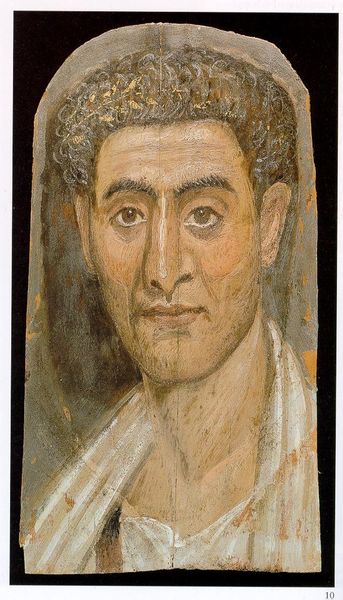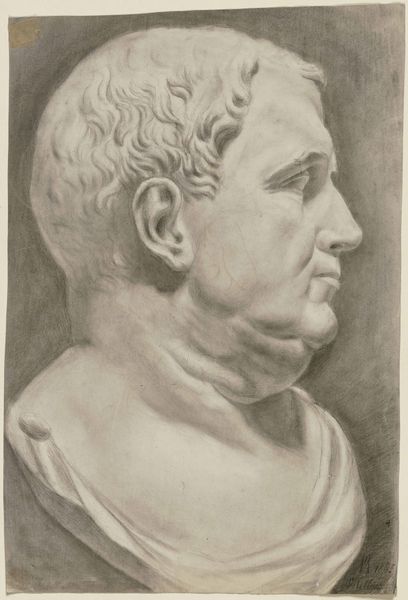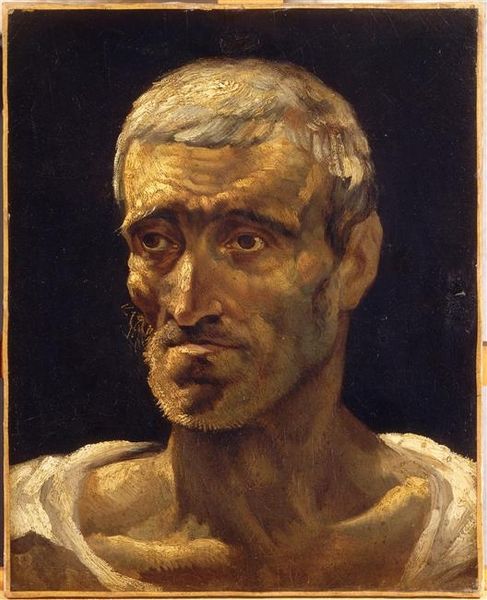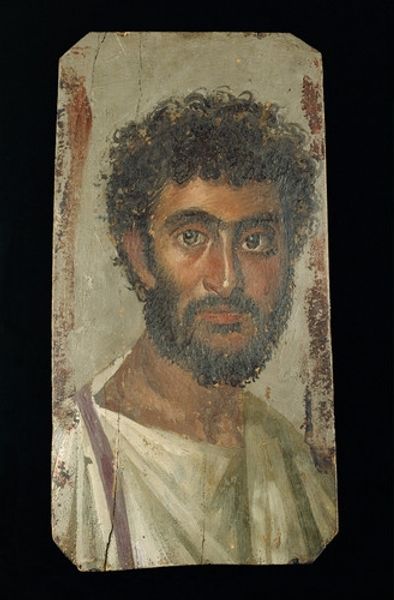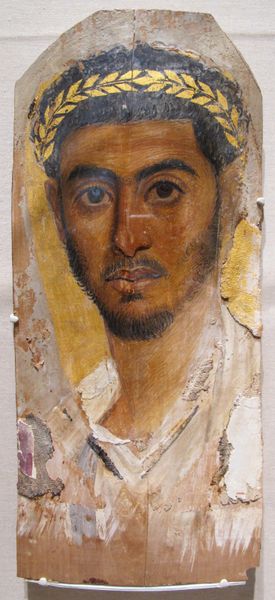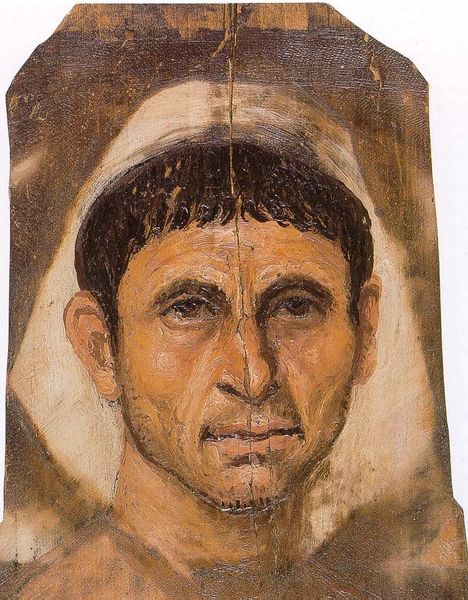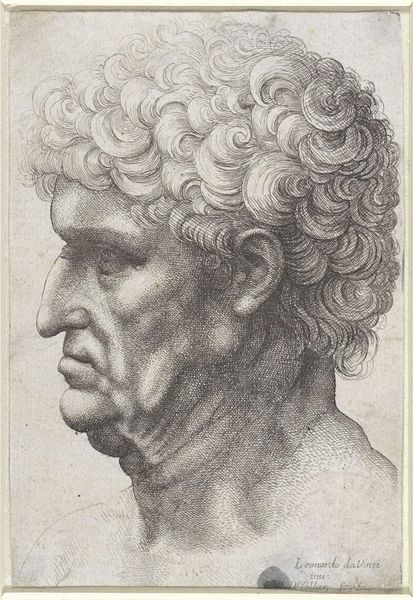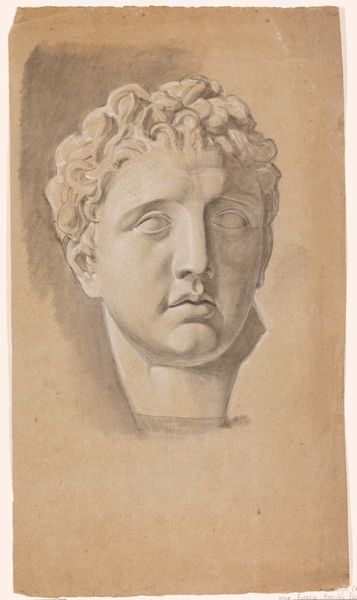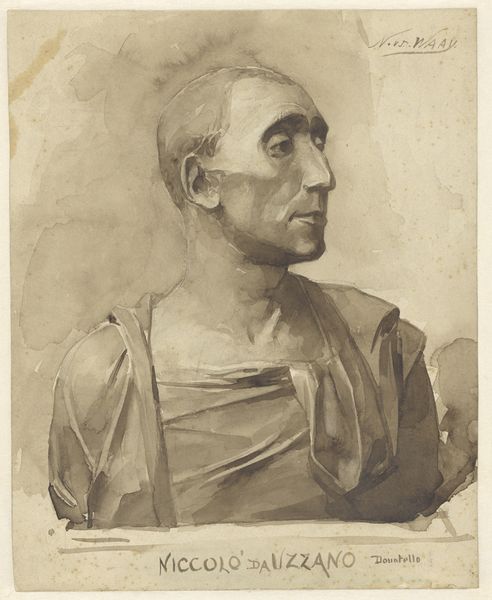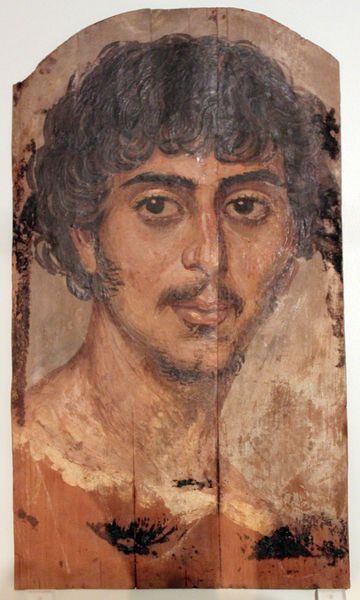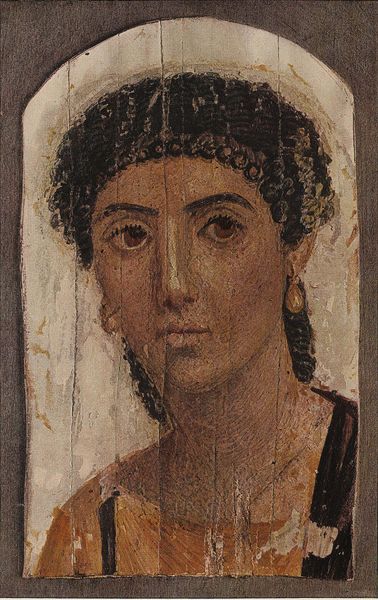
tempera, painting
#
portrait
#
tempera
#
painting
#
ancient-egyptian-art
#
oil painting
#
ancient-mediterranean
#
portrait drawing
#
realism
Copyright: Public domain
This Fayum portrait, painted in Roman Egypt, presents a rich fusion of cultural symbols around the transition into the afterlife. The most prominent visual element is the gaze of the subject, staring directly at the viewer, a motif echoing across centuries in funerary art. Such direct gazes can be found in ancient Roman portraiture, and were later adopted in early Christian icons, intending to establish a personal connection with the deceased or holy figure. Here, the eyes convey not just identity but presence, a powerful assertion of the individual’s spirit meant to endure beyond death. This enduring gaze, a symbol of vitality, persists through time. It is found again in modern photography, reminding us of our inescapable mortality. The practice of depicting the dead with open eyes is a psychological attempt to defy the natural processes, a symbol of hope for eternal life and remembrance.
Comments
No comments
Be the first to comment and join the conversation on the ultimate creative platform.
